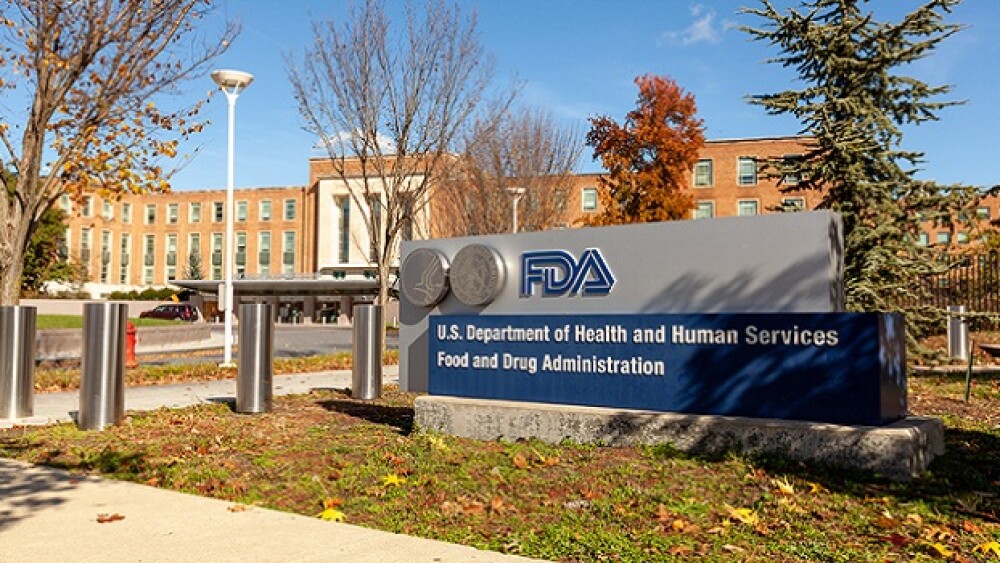- Early signs of clinical activity without increased toxicity observed
HAMPTON, N.J., June 05, 2017 (GLOBE NEWSWIRE) -- Celldex Therapeutics, Inc. (Nasdaq:CLDX) announced today data from the Phase 1 portion of a Phase 1/2 dose escalation and cohort expansion study examining the combination of varlilumab, Celldex’s CD27 targeting investigational immune-activating antibody, and Bristol-Myers Squibb’s anti-PD-1 immunotherapy Opdivo® (nivolumab). Rachel E. Sanborn, M.D., Co-director of the Providence Thoracic Oncology Program; and Phase I Clinical Trials Program, at the Earle A. Chiles Research Institute, Providence Cancer Center, in Portland, Ore. presented results from the study in an oral presentation entitled, “Clinical Results with Combination of Anti-CD27 Agonist Antibody, Varlilumab, with Anti-PD1 Antibody Nivolumab in Advanced Cancer Patients” at the 2017 American Society of Clinical Oncology (ASCO) Annual Meeting in Chicago. The primary objective of the Phase 1 portion (n=36) of the study was to evaluate the safety and tolerability of the combination. The Phase 2 portion of the study is expected to complete enrollment in early 2018.
“Combining PD-1 inhibition with a potent T cell activating agent provides the opportunity to broaden the number of patients that benefit from checkpoint blockade,” said Dr. Sanborn. “While early, we have evidence that this combination does not add toxicity, can turn some ‘immune-cold’ tumors hot, and may have clinical benefit, including in some patients who are not likely to respond to monotherapy. Further elucidating the role of intermittent versus chronic T cell activation through the comparison of alternate varlilumab dosing regimens is an essential component of the ongoing Phase 2 study and could be important in optimizing the potential of this combination.”
Key Highlights
• The majority of patients enrolled in the study had PD-L1 negative tumor at baseline and presented with Stage IV, heavily-pretreated disease. 80% of patients enrolled presented with refractory or recurrent colorectal (n=21) or ovarian cancer (n=8), a population expected to have minimal response to checkpoint blockade.
• Combining the potent immune activator, varlilumab, with the PD-1 inhibitor, Opdivo, was well tolerated at all varlilumab dose levels tested without any evidence of increased autoimmunity or inappropriate immune activation.
• Notable disease control observed (stable disease or better for at least 3 months), considering the Stage IV patient population, contained mostly colorectal and ovarian cases (80%).
- 0.1 mg/kg varlilumab + 240 mg Opdivo: 1/5 (20%)
- 1 mg/kg varlilumab + 240 mg Opdivo: 5/15 (33%)
- 10 mg/kg varlilumab + 240 mg Opdivo: 6/15 (40%)
• Three partial responses (PR) observed.
- A patient with PD-L1 negative, MMR proficient colorectal cancer, typically unlikely to respond to checkpoint blockade monotherapy, achieved a confirmed PR (presented with metastatic disease to the liver, adrenal gland, abdomen and mesenteric nodule and on study experienced a 95% decrease in target lesions, including resolution of 4/5 target lesions, one 6 mm mesenteric nodule remains). Following completion of combination treatment, the patient continues to receive treatment with Opdivo monotherapy at 22 months. The patients previously received two prior chemotherapy-based regimens, one of which also included EGFR-targeted therapy.
- A patient with low PD-L1 (5% expression) squamous cell head and neck cancer achieved a confirmed PR (59% shrinkage) and experienced progression free survival of 6.7 months.
- A patient with PD-L1 negative ovarian cancer experienced a single timepoint PR (49% shrinkage) but discontinued treatment to a dose-limiting toxicity (immune hepatitis, an event known to be associated with checkpoint inhibition therapy).
• Migration of immune cells to tumor observed.
- Peripheral blood analysis consistent with varlilumab monotherapy, transient increase in inflammatory chemokines (CXCL10, MCP-1, MIP-1ß and MIG) and prominent decreases in CD4 and Treg cells without clear association with dose observed.
- Tumor biopsy analysis revealed the majority of patients had “cold” tumors at baseline (negative or low PD-L1 and low T cell infiltrate).
- A subgroup analysis was conducted in patients with ovarian cancer based on an observed increase of PD-L1 and tumor-infiltrating lymphocytes in this patient population.
• In patients with paired baseline and on-treatment biopsies (n=13), only 15% were PD-L1 positive (= 1% tumor cells) at baseline compared to 77% during treatment (p=0.015).
• Patients with increased tumor PD-L1 expression and tumor CD8 T cells correlated with better clinical outcome with treatment (stable disease or better).
• Continuous activation by immune agonists may not be optimal as it could lead to immune exhaustion and dampen the effect of combination therapy. The Phase 2 portion of this study includes alternate varlilumab dosing regimens to evaluate continuous versus intermittent immune activation at higher and lower dose levels and varied frequency.
In April 2016, the trial advanced to the Phase 2 portion of the study and includes cohorts in colorectal cancer, ovarian cancer, head and neck squamous cell carcinoma, renal cell carcinoma and glioblastoma. Varied dosing schedules are being explored in the ovarian and head and neck cohorts. Celldex plans to complete enrollment across all cohorts in the first quarter of 2018 and will work with Bristol-Myers Squibb to present data from the Phase 2 study at a future medical meeting. The primary objective of the Phase 2 study is overall response rate for all cohorts except glioblastoma, where the primary objective is the rate of 12-month overall survival. Secondary objectives include pharmacokinetics assessments, determining the immunogenicity of varlilumab when given in combination with Opdivo and further assessing the antitumor activity of combination treatment, including duration of response, time to response, progression-free survival and overall survival. The study is being conducted by Celldex under a clinical trial collaboration with Bristol-Myers Squibb Company. The companies are sharing development costs.
About Varlilumab
Varlilumab is a fully human monoclonal agonist antibody that binds and activates CD27, a critical co-stimulatory molecule in the immune activation cascade. CD27 can be effectively manipulated with activating antibodies to induce potent anti-tumor responses and may result in fewer toxicities due to its restricted expression and regulation. Varlilumab is a potent anti-CD27 agonist that induces activation and proliferation of human T cells when combined with T cell receptor stimulation. In lymphoid malignancies that express CD27 at high levels, varlilumab may have an additional mechanism of action through a direct anti-tumor effect. Varlilumab has completed a single-agent Phase 1 dose-escalation study, demonstrating potent immunologic activity consistent with its mechanism of action and antitumor activity in patients with advanced, refractory disease. No maximum tolerated dose was reached, and minimal toxicities were observed.
Opdivo® is a registered trademark of Bristol-Myers Squibb.
About Celldex Therapeutics, Inc.
Celldex is developing targeted therapeutics to address devastating diseases for which available treatments are inadequate. Our pipeline includes antibodies, antibody-drug conjugates and other protein-based therapeutics derived from a broad set of complementary technologies which have the ability to engage the human immune system and/or directly inhibit tumors to treat specific types of cancer or other diseases. Visit www.celldex.com.
Forward Looking Statement
This release contains “forward-looking statements” made pursuant to the safe harbor provisions of the Private Securities Litigation Reform Act of 1995. These statements are typically preceded by words such as “believes,” “expects,” “anticipates,” “intends,” “will,” “may,” “should,” or similar expressions. These forward-looking statements reflect management’s current knowledge, assumptions, judgment and expectations regarding future performance or events. Although management believes that the expectations reflected in such statements are reasonable, they give no assurance that such expectations will prove to be correct or that those goals will be achieved, and you should be aware that actual results could differ materially from those contained in the forward-looking statements. Forward-looking statements are subject to a number of risks and uncertainties, including, but not limited to, our ability to successfully integrate the business and programs of Kolltan with our business and programs; our ability to successfully complete research and further development and commercialization of glembatumumab vedotin and other Company drug candidates; our ability to obtain additional capital to meet our long-term liquidity needs on acceptable terms, or at all, including the additional capital which will be necessary to complete the clinical trials that we have initiated or plan to initiate; the uncertainties inherent in clinical testing and accruing patients for clinical trials; our limited experience in bringing programs through Phase 3 clinical trials; our ability to manage and successfully complete multiple clinical trials and the research and development efforts for our multiple products at varying stages of development; the availability, cost, delivery and quality of clinical and commercial grade materials produced by our own manufacturing facility or supplied by contract manufacturers, who may be our sole source of supply; the timing, cost and uncertainty of obtaining regulatory approvals; our ability to maintain and derive benefit from the Fast Track designation for glembatumumab vedotin which does not change the standards for regulatory approval or guarantee regulatory approval on an expedited basis, or at all; the failure of the market for the Company’s programs to continue to develop; our ability to protect the Company’s intellectual property; the loss of any executive officers or key personnel or consultants; competition; changes in the regulatory landscape or the imposition of regulations that affect the Company’s products; and other factors listed under “Risk Factors” in our annual report on Form 10-K and quarterly reports on Form 10-Q.
All forward-looking statements are expressly qualified in their entirety by this cautionary notice. You are cautioned not to place undue reliance on any forward-looking statements, which speak only as of the date of this release. We have no obligation, and expressly disclaim any obligation, to update, revise or correct any of the forward-looking statements, whether as a result of new information, future events or otherwise.
Company Contact Sarah Cavanaugh Vice President of Investor Relations & Corp Communications Celldex Therapeutics, Inc. (781) 433-3161 scavanaugh@celldex.com Charles Liles Associate Director of Investor Relations & Corp Communications Celldex Therapeutics, Inc. (781) 433-3107 cliles@celldex.com Media Contact Dan Budwick Founder, 1AB Media (973) 271-6085 dan@1abmedia.com




